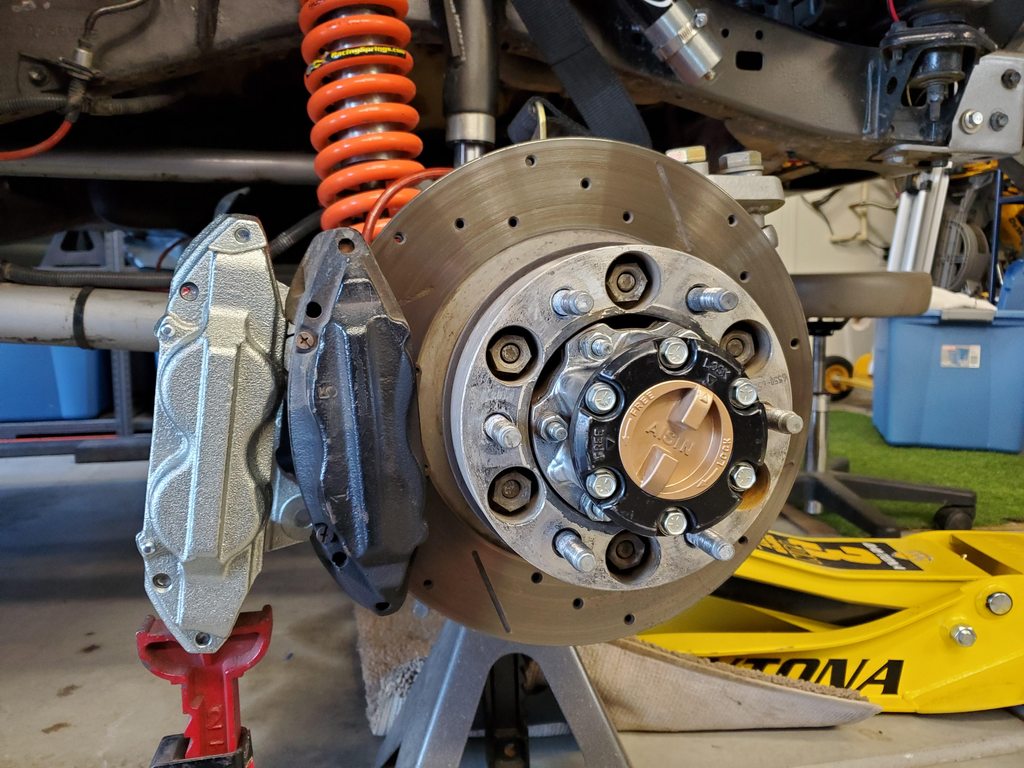We all know the brakes in the 80 series were designed with the 15in wheel in mind and hardly updated till 1997. Tiny-ass rotors, not too big calipers. The braking distance from 30mpg to zero over 300ft was maybe decent 40 years ago, but not now.
Some disclaimers:
1. Yes, I've read numerous threads over here
2. Yes, I've read the thread where a guy makes some custom mounting plates which accept Wilwood rotors, made some Wilwood caliper adapters and it looks nice but my guess is the price will be over $1000 and the pads/rotos might be not as easy and cheap to replace in the future.
3. Yes, I've seen all those big brake kits offered for the 80 series online but they are close and over $2000 so I can't justify buying brakes which cost 1/3 the price of the truck or as much as a decent Nissan Pathfinder or LS400.
I am wondering if anybody has been thinking what I am thinking.
- remove the OEM rotors
- buy 2024 tundra rotors
- increase the center bore from 97mm to 105mm for 50 bucks in any shop with a lathe.
- the center bore will let you put the tundra rotos on top of the flange (not underneath as per factory)
- that will move the rotors towards the outside but the tundra rotors are deeper to compensate for that
- I haven't measured the thickness of the rotor mounting flange but if it is between 18-23mm, we should be able to make it work
- longer wheel studs for around $30
- then, instead of buying Wilwood calipers, one can buy OEM Porsche Brembo 6 piston calipers which are around $250
The only hard (maybe expensive) thing would be machining the adapter for the caliper holes but that's still within $200 a pair. Designing is free and then it's a question of sending the files to a CNC shop. Overall that would place the costs like that: $200 tundra rotors, 250 calipers, $50 center bore machining, $30 studs, $200 adapter machining. Around $700.
Why am I the only one thinking like that? Am I very wrong?
Attached files are the 80 series rotor diagram, the 354mm tundra rotor diagram, the rotor vs flange scenario.



Some disclaimers:
1. Yes, I've read numerous threads over here
2. Yes, I've read the thread where a guy makes some custom mounting plates which accept Wilwood rotors, made some Wilwood caliper adapters and it looks nice but my guess is the price will be over $1000 and the pads/rotos might be not as easy and cheap to replace in the future.
3. Yes, I've seen all those big brake kits offered for the 80 series online but they are close and over $2000 so I can't justify buying brakes which cost 1/3 the price of the truck or as much as a decent Nissan Pathfinder or LS400.
I am wondering if anybody has been thinking what I am thinking.
- remove the OEM rotors
- buy 2024 tundra rotors
- increase the center bore from 97mm to 105mm for 50 bucks in any shop with a lathe.
- the center bore will let you put the tundra rotos on top of the flange (not underneath as per factory)
- that will move the rotors towards the outside but the tundra rotors are deeper to compensate for that
- I haven't measured the thickness of the rotor mounting flange but if it is between 18-23mm, we should be able to make it work
- longer wheel studs for around $30
- then, instead of buying Wilwood calipers, one can buy OEM Porsche Brembo 6 piston calipers which are around $250
The only hard (maybe expensive) thing would be machining the adapter for the caliper holes but that's still within $200 a pair. Designing is free and then it's a question of sending the files to a CNC shop. Overall that would place the costs like that: $200 tundra rotors, 250 calipers, $50 center bore machining, $30 studs, $200 adapter machining. Around $700.
Why am I the only one thinking like that? Am I very wrong?
Attached files are the 80 series rotor diagram, the 354mm tundra rotor diagram, the rotor vs flange scenario.



